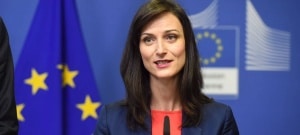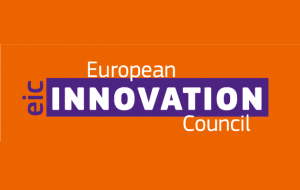A closer analysis of the Horizon Europe Annotated Model of Grant Agreement (latest available version at June 16th 2022 i.e. “Pre-draft – November 2021”), provides some interesting elements of novelty concerning the rules and eligibility of the subcontracting budget category.
Subcontracting: an hot topic for the EC and the Beneficiary
Subcontracting is definitely one of the most challenging aspect of the administrative and financial management of an EU project. Your consortium misses a core competence, or a crucial expertise, or even you believe it is not worth to involve a new partner for dealing with a sole task, so you decide to subcontract it to an external provider.
The pain point of the subcontracting is that, given the nature of this budget category, your donor is extremely sensitive to what task is subcontracted, why you want to subcontract the task, and how you carry out the selection of the subcontractor. The attention paid by the EC to the subcontracting rules is driven by several assumptions, the main ones being:
- the subcontracting practice should not represent a way to circumvent the required “Technical Capacity” of the beneficiary to carry out the action; if a large part of the partner’s tasks is subcontracted, implicitly the partner demonstrates lacking technical capacity, and subsequently the requirement of “…having a valid role in the project…” also is questioned;
- The subcontractor operates under “market conditions”. It carries out the work invoicing the partner, therefore it charges “the actual cost generated by the service delivery” + “a profit margin” on the back of the project (and EU taxpayers). One may also say that subcontracting is the easiest way to drag money out of the project scope for private interests (on this ground, the GA also requires to have a solid policy/practice to avoid being in a “conflict of interest”, potentially triggering financial consequences due the breach of the obligation to prevent any conflict of interest in “subcontracting” and in the “purchase of goods and services”);
At the other end of the Grant Agreement line, from the Beneficiary’s point of view, the critical aspect is to ensure that cost related to subcontracting will be finally eligible in the cost statements, and will be reimbursed by the donor. In addition, the beneficiary wants to be protected by any observation from the EC concerning a possible conflict of interest.
Eligibility of the subcontracting
Based on the experience gained in the previous Framework Programmers for Research and Innovation of the European Union, and because of the novel Corporate Approach adopted in the new programming period 2021 – 2027, the current set-up of rules concerning the subcontracting is now quite stabilized and (hopefully) less prone to errors.
The eligibility conditions set in the GA for the subcontracting category (specific eligibility criteria), in conjunction with the general eligibility criteria of the form of cost “actual cost”, provides a picture that set the eligibility of subcontracting when the following four main conditions are met:
- The subcontracting is foreseen in the Annex I to the GA (description of the action), or approved (without an amendment) through a Simplified Approval Procedure;
- The costs for the subcontracting are entered in the Annex II to the GA (Estimated Budget), or duly justified as an unforeseen subcontract in the following periodic reporting;
- The subcontractor is selected according to the beneficiary’s procurement policies/ or usual practices (irrespective of the source of funding), or in compliance with the national legislation on Public Procurements, if the beneficiary is a Contracting Authority;
- The subcontract is assigned to the bidder offering the “best value for money”.
Those are four simple principles that make a subcontract eligible in the 99% of cases.
Nevertheless, the EC must have registered uncertainties or doubts on the interpretation of those rules by the beneficiaries in the past. This need of clarification must have been so significant to deserve further formal interpretation and clarification in the AMGA. In particular, points 3) and 4) of the above list benefit from some element of novelty introduced with Horizon Europe.
What’s new in Horizon Europe?
Concerning point 3) above, the main element of novelty introduced in the new interpretation of the GA is that – despite how the selection is technically conducted according to the beneficiary approach – the final decision on the winning bidder should be taken by a college of persons (shortly defined “evaluation committee”). This provision is included in the AMGA in the form of a best practice, not even reaching the level of “best effort obligation”. The reason may be in the fact the EC cannot impose a specific procurement procedure to the beneficiaries (this may imply to change the procedure for all procurements in the organization, not only EU funds-related), condition that would not be acceptable for applicants, potentially affecting the participation to the program tout-court.
To some extent, this novelty could be assimilated to the need of having timesheets countersigned by a supervisor. It is the same rationale, pushing for a wider distribution of responsibilities along the beneficiary’s internal chain of segregation of duties. In other words, the larger is the number of persons is involved in the process, the less the process will be prone to error/irregularities/frauds.
Despite the allocation of this novelty among the “best practices”, we believe that ensuring decisions are taken by more than one person according to your procurement policies/practices can be good “food for thoughts”.
Concerning point 4) on “best value for money” principle, this point has always been one of the most “grey areas” of the administrative and financial management of the Horizon actions. To ensure the “best value for money” is the typical goal of an open, transparent, and fair selection procedure. However, we said (as long as you are not a Contracting Authority) you are bind to use your usual practices only (e.g. an SME may not have complex procedures for the selection of suppliers). Nevertheless, the best value for money principle must be respected.
Therefore, the AMGA provides a non-exhaustive list of cases and situations when – despite no competitive selection procedures was carried out by the Beneficiary – the compliance with this principle can be alternatively demonstrated.
It is a list of 6 bullet points, introduced as follow:
“…If a beneficiary did not request several offers, it must be able to prove compliance with best value for money, lowest price (and no conflict of interest) in case of a check, review, audit or investigation by showing:
- data from a previous competitive tender on a similar subject that confirms the market value
- a conducted market consultation, e.g. price quotations, supplier brochures, or consultation with help of independent experts
- that no suitable offers have been submitted in response to a prior completive selection procedure
- that a subcontractor is in a monopoly situation due to technical reasons; or exclusive (intellectual property) rights; or acquisition of a unique work of art or artistic performance; or that the task can only be performed by an international organization which cannot participate in competitive procedures according to its statutes
- that the subcontractor is the winner of a prior competitive design contest under the action or a linked action
- a need for special security measures in order to protect the essential interests of the Union in accordance with the call conditions.
We believe that, based on this clarification, Beneficiaries not having in place competitive selection procedures for their purchase processes – at least when using EU funds – should pay attention to keep record of any element useful to prove one of the conditions above, and a justification for the best value for money.
In this case, we believe that the EC services implemented a remarkable step towards the clarification of the eligibility rules of project expenditure, fully in line with the European Court of Auditors recommendations (mainly in the ECA yearly reports 2019 and 2020) for a progressive reduction of the Error Rate in Horizon programmer.
Contact us if you would like to know how we can maximize your chances of success.
Source: EFMC
Picture: Pexels




